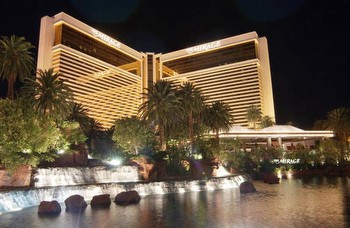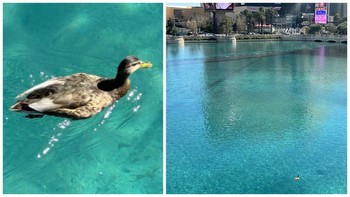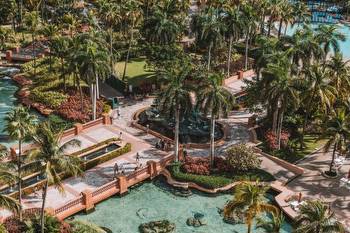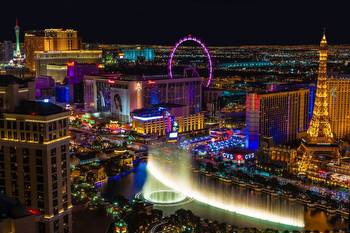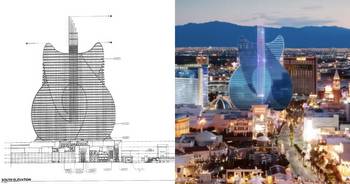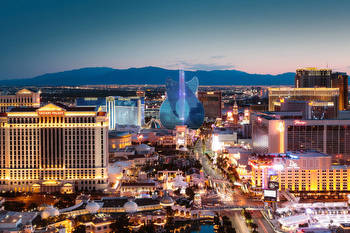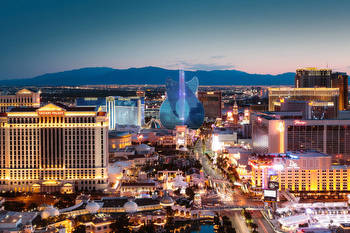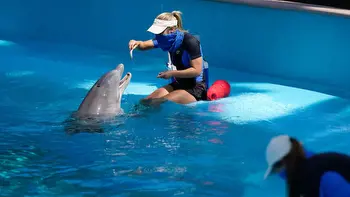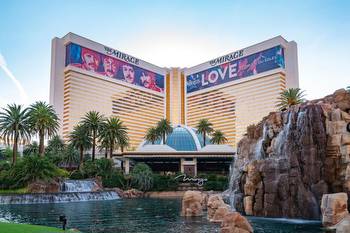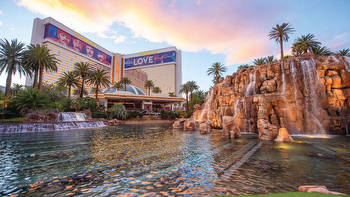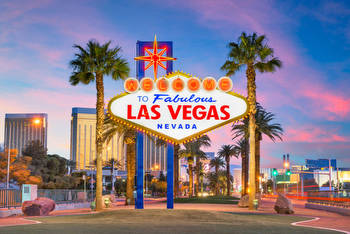Too Many Dolphins Have Died at the Mirage Casino in Las Vegas

In September, an 11-year-old dolphin named K2 died at the Mirage casino in Las Vegas, Nevada. His death came as a surprise, since K2 had been a seemingly healthy, energetic young dolphin in the prime of his life, and it followed on the heels of two other dolphin deaths in the same calendar year. Nineteen-year-old Maverick died earlier in September after being treated for a lung infection, and 13-year-old Bella died in April following a gastroenteritis diagnosis.
K2 is in fact the 16th dolphin (out of 23 in total) to die in the casino's three-decade history. The latest spike in deaths has now led to even greater scrutiny into the Mirage's animal exhibit. Scientists and animal rights activists are saying that it's "an exceptional number of deaths" in a short period of time, indicative of a lack of proper care for these highly intelligent and social mammals.
Naomi Rose, a marine mammal scientist for the Animal Welfare Institute in Washington, D.C., told the Nevada Current, "Given the Mirage has only been open for 30 years, most of the dolphins should still be alive. Certainly the ones who were born there should still be alive. If you're protecting them from predators and food shortages, and all the things that threaten them out in the wild, they should live longer than they do in the wild."
The problem is that there's no way to replicate the wild in swimming pools. The dolphins cannot dive as deeply as they normally would, hunt, socialize, or escape to cool shady waters whenever they please. Instead, they spend their years bored, swimming in relatively shallow pools that are kept at 78 degrees Fahrenheit and performing tricks for visitors that are incentivized by ongoing hunger.
Shade is provided by palm trees, nearby buildings, and sun shades, which the Mirage says is adequate but Rose questions. "There should be no facilities in the desert. That's just stupid. As a professional biologist, it's offensive to me that the industry thinks it's appropriate for these animals to be out in the desert."
One can argue, too, that breeding and captive programs are unnecessary for a species that's doing just fine in the wild. As the RSCPA states, the bottlenose dolphin is not threatened in the wild and is listed as of least concern on the International Union of Conservation of Nature Red List, with an estimated wild population of at least 600,000. "There is no evidence of a decline in the number of wild bottlenose dolphins that would justify the keeping and breeding of dolphins in captivity to help replenish wild populations."
There are still seven dolphins remaining in the Mirage animal exhibit, which has been temporarily closed with no scheduled reopening date. Dave Blasko, executive director of animal care at the Mirage, told National Geographic that they are in the process of "working with the National Marine Mammal Foundation to conduct a complete review and assessment of all aspects of our dolphin-care program." He said that reviewers will examine the facility's veterinary care, animal husbandry and behavior, water quality and filtration and the overall environment.
But many people want the other dolphins to be removed altogether from the Mirage before they too suffer the same fate as K2, Maverick, and Bella. Free the Ocean, an organization that Treehugger works with on a regular basis, has created a petition has created a petition calling on Blasko to send them to a sanctuary, such as the Dolphin Project in California. There, the dolphins will "either be released once they're ready or will live out their lives at the sanctuary in dignity and quality... instead of living in the desert in Las Vegas."
The petition also calls for the permanent closure of the Mirage's animal exhibit, which would require the relocation of additional species, including "four leopards, two lions, eight tigers, one two-toed sloth, one umbrella cockatoo, and approximately 350 aquarium fish".
If you wish to add your name and voice to the petition, you can do so here.










